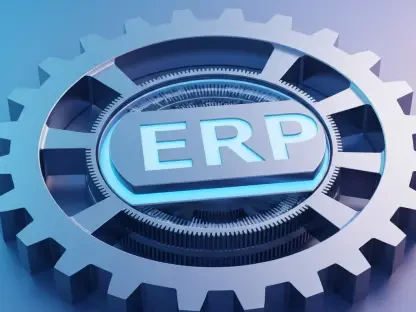In our exploration of the latest innovations in artificial intelligence, Anand Naidu offers valuable insights into Google’s recent developments with their Gemini models—specifically, the Gemini 2.5 Flash-Lite model. As an expert deeply familiar with both frontend and backend technologies, Anand provides a nuanced understanding of Google’s advancements in AI technology, focusing on efficiency and performance.
Can you tell us about the new Gemini 2.5 Flash-Lite model that Google recently previewed?
The Gemini 2.5 Flash-Lite model is an exciting development from Google. It’s optimized primarily for cost and speed, making it highly suitable for tasks that require high throughput, like classification and summarization at scale. These features make it particularly appealing for businesses needing efficient models that operate quickly and handle significant data volumes without incurring high costs.
What makes Gemini 2.5 Flash-Lite optimized for cost and speed?
Its design prioritizes low latency and cost-effectiveness, balancing the need for quick processing with affordability. This optimization is achieved by controlling the model’s thinking budget, allowing for dynamic adjustments to how much cognitive effort the model spends on producing responses. This results in swift token processing, crucial for applications demanding rapid action.
In what scenarios is Gemini 2.5 Flash-Lite particularly useful?
Gemini 2.5 Flash-Lite shines in environments where processing speed and cost efficiency are paramount, like large-scale data classification or summarization. This model is ideal for companies that frequently handle massive datasets and require quick summarization without sacrificing accuracy or budget constraints.
How does Flash-Lite’s ability to control the thinking budget via an API parameter work?
This capability gives developers significant flexibility, allowing them to set the precise amount of “thinking” the model should do before responding. By adjusting this parameter, developers can choose whether to invest more time and resources in reasoning for complex tasks or prioritize speed for more straightforward operations, tailoring the model’s response based on specific needs.
Why is thinking turned off by default in Flash-Lite, and what benefits does this offer?
Thinking is switched off by default to enhance speed and lower costs. While this may sound counterintuitive, many processes benefit from rapid, straightforward computation without the extra cognitive load. By defaulting to non-thinking mode, Flash-Lite provides businesses with an efficient option for simpler tasks that don’t require deep reasoning.
How does Gemini 2.5 Flash-Lite compare to the previous Gemini 1.5 Flash and 2.0 Flash models in terms of performance?
Gemini 2.5 Flash-Lite represents significant progress over earlier models like Gemini 1.5 Flash and 2.0 Flash. It offers improved performance across evaluations and a faster time to the first token, translating to an ability to process more tokens per second. These enhancements ensure more efficient and speedy computation, aligning with Google’s goals to advance AI capabilities.
Can you explain how the control over the thinking budget benefits developers using Gemini 2.5 models?
This control empowers developers to tailor their application’s performance characteristics, optimizing resources for what’s needed at any given time. They can deploy energy-intensive thinking when precision matters, or alternatively, prioritize swift processing when handling large datasets. This flexibility ensures each task can be accomplished in the most cost-effective manner possible.
Are there any changes in the stability or features of Gemini 2.5 Pro and Gemini 2.5 Flash from their previews?
No significant changes were introduced post-preview; both models have remained stable since release. The consistent performance of these models reflects Google’s commitment to providing reliable and robust tools for various applications, catering to a broad spectrum of AI challenges without needing additional alterations.
How have the pricing changes affected the usage of the Gemini 2.5 Flash in terms of input and output tokens?
Pricing adjustments for Gemini 2.5 Flash, including increased input token cost and reduced output token price, might influence user strategies. These changes encourage users to manage data differently, possibly adjusting their operational focus to balance token usage while still benefiting from efficient and cost-effective processing.
Why was the price difference for thinking vs. non-thinking removed in the Gemini 2.5 Flash model?
Removing this price difference simplifies the cost structure, offering users a uniform experience regardless of the cognitive process involved. This change encourages broader adoption without concern for additional fees tied to varying complexity levels, promoting consistent usage across different scenarios.
Could you provide examples of the types of tasks each of the Gemini 2.5 models (Flash-Lite, Flash, Pro) are best suited for?
Flash-Lite is excellent for high-volume, throughput-driven tasks requiring speed and efficiency. Flash is suited for routine operations needing fast performance without intricate thinking. Pro, on the other hand, excels with highly complex coding tasks requiring deep cognitive engagement and advanced reasoning capabilities, making it ideal for developers tackling intricate problems.
How does the introduction of Gemini 2.5 models align with Google’s overall strategy in AI innovation?
The Gemini 2.5 models embody Google’s ongoing strategy to develop AI solutions that are both efficient and scalable. By optimizing speed, cost, and flexibility across varying levels of complexity, Google positions itself as a leader driving innovation forward in AI technology, ensuring their models cater to diverse market needs and computing challenges.
Do you have any advice for our readers?
For those eager to leverage these models, consider your specific needs and how best to allocate your resources. Understanding the distinct advantages and limitations of each model will guide you in selecting the right tool for your business challenges, maximizing both performance and cost-efficiency.









